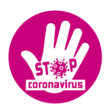 As workplaces prepare to re-open in line with the government’s three phase plan for easing lockdown, some companies are showing that a relatively low risk environment is possible.
As workplaces prepare to re-open in line with the government’s three phase plan for easing lockdown, some companies are showing that a relatively low risk environment is possible.
Even in the retail sector, where front line workers have been dealing with shoppers during the Covid-19 pandemic, safeguards have been shown to protect staff.
At Marks & Spencer, the rate of coronavirus infection among employees has been no higher than among the general population, according to Retail Week. This achievement may be down to the measures that the company took in March. These included managing the number of people shopping at any one time, two-metre space floor markings, Perspex screens at checkouts, colleagues washing their hands every 30 minutes and the cleaning of self-checkouts after every customer.
If you’re looking to re-open premises you need to carry out a Covid-19 risk assessment and implement a ‘back to work’ plan that aims for the best possible safety and wellbeing.
By doing this, you’ll give people the confidence to return to work, ensure a successful re-start and reduce the risk of business interruption.

Preparing your building
A review of how your premises can be adapted to manage Covid-19 should be your first step.
The HSE gives advice on the risks at www.hse.gov.uk/news/working-safely-during-coronavirus-outbreak.htm. Recommendations include considering the minimum number of people needed to carry out work tasks in any area and assessing how people will be able to maintain a two-metre space between each other.
Among the processes you will need to manage are:
- People arriving and leaving
- Meetings and interviews
- Gathering spaces, such as canteens or break out areas
- Washrooms
You should build a list of spaces where the risk of transmitting Covid-19 may be higher, and of times of day when employees would usually be in close contact.
This will help you understand where physical distancing measures are needed, how many employees can safely be accommodated at any one time, and any need for staggered arrival, departure and break times.
From lockers in reception to safely store bags and coats, to floor and desk screens that help people keep their distance, you can make your building Covid-19-ready.

Equipping your workforce
The HSE advises employers to talk to employees as part of any risk assessment, because this can often help to identify potential issues. You could consider discussing your return to work plan with people early on so they can start to prepare for any changes, and contribute ideas that could make a valuable difference to its success.
Once back at work, employees will need to be equipped to work safely from their first moment through the door.
You could consider a Return to Work pack, with healthy working products such as hand sanitiser and face mask, and other items for personal use, such as stationery set, pen and notebook, cutlery and drinks cup.
To prevent people from walking around the building to use often-shared devices such as shredder, laminator, labelling equipment or scanner, you may need to invest in these for use on an individual basis.

Controlling site access
Keeping the number of people in any work area, and the number of visitors on site, to a minimum is essential.
If not all staff can be safely accommodated at one time, you may need to implement ‘work bubbles’, where a smaller team of people works in the same space on the same days each week, and the area is deep cleaned in between change-overs of teams.
Where meetings, internal or external, cannot be held by phone or video call, these should include as few people as possible, and the two-metre distance rule applied.
Headsets, speakerphones, webcams and document cameras will all encourage a greater use of audio and videoconferencing - and make virtual meetings easier to run and participate in.

Social distancing
People will find it easier to social distance if you make it clear with signage, two metre spaced floor and wall stickers and Perspex screens in between workspaces.
To reduce the risk of gatherings, you may need to limit the use of shared equipment such as printers, photocopiers, shredders, kettles, watercoolers, and microwaves.
You could assign specific people to pieces of equipment, or provide each work bubble with their own set of equipment. This may help to prevent people accidentally crossing over if they need to shred documents or make a cup of tea.

Reducing virus transfer
One of the first steps for preventing the risk of virus transfer within an organisation is to use a mounted or handheld thermal imaging camera in reception areas.
Simply by scanning everyone on arrival, from a two-metre distance, these can instantly detect raised body temperature and could play a vital role in preventing the Covid:19 virus from entering your building.
The other major factor in preventing cross infection is the quality of cleaning.
Hotspots for virus transmission, such as door handles, sink taps, kettle handles, keyboards and touch screens, should be cleaned throughout the day, and full cleans carried out in between shifts or after closing.
Washroom and storage areas around the building should be stocked with enough cloths, wipes, mops, buckets and bleach and chlorine-based products to ensure that this cleaning can be carried out as frequently as possible.
Hand sanitiser should be available on reception for everyone to use when entering the building, and any employees given the necessary PPE to protect them from contact with people or goods from outside their bubble. This could include face masks, aprons, cuffs and sneeze shields.
Washrooms and all food preparation areas should have plenty of handwash and signs reminding people to clean their hands.
With Banner you can protect the people in your workplace during Covid-19.
Join us on LinkedIn or follow us on Twitter. Or subscribe to our blog for notifications on our latest articles by adding your email to the subscribe box at the top of this page.


